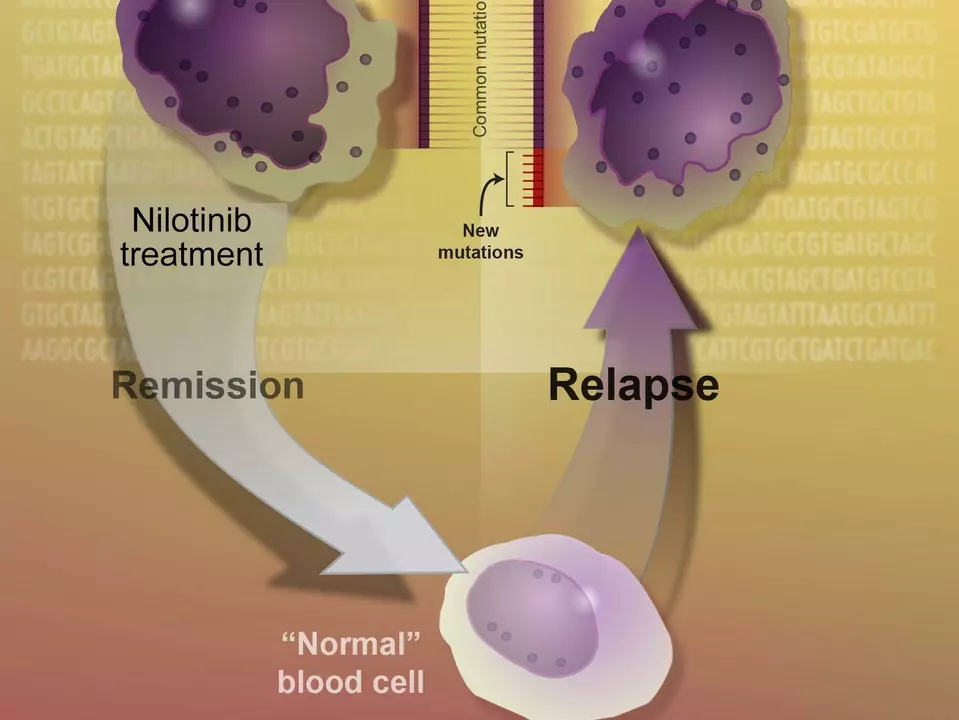CML Treatment: What Works, What to Watch For
If you or someone you know has chronic myeloid leukemia (CML), the first question is usually “how will we treat it?” The good news is that modern medicine offers several effective drugs that can keep CML under control for years. Below we break down the main treatment choices, how they work, and practical tips to handle side effects.
Main Treatment Options
The backbone of CML therapy is a class called tyrosine‑kinase inhibitors (TKIs). They target the BCR‑ABL protein that drives the disease. Here’s a quick look at the most common TKIs:
- Imatinib (Gleevec): First TKI approved for CML. Most patients start here because it’s well studied and generally tolerable.
- Dasatinib (Sprycel): Works faster than imatinib and is good for people whose disease isn’t responding to the first drug.
- Nilotinib (Tasigna): Similar potency to dasatinib but taken twice daily with a low‑fat meal. It can cause higher cholesterol, so regular blood tests help.
- Bosutinib (Bosulif): Often chosen when other TKIs give side effects like swelling or skin rashes.
- Ponatinib (Iclusig): Reserved for tough cases where the disease has a specific mutation (T315I). It’s powerful but may raise blood pressure, so doctors keep a close eye on your heart.
All these pills are oral and taken daily. Your doctor will pick one based on disease stage, other health problems, and how you react to the medication.
Managing Side Effects & Living with CML
TKIs are effective but not without quirks. Common side effects include fatigue, mild nausea, muscle cramps, and low blood counts. Here’s what helps:
- Stay on schedule. Skipping doses can let the leukemia grow back. Set a daily alarm if you need to.
- Track blood work. Labs every 1–3 months let your doctor spot low platelets or liver changes early.
- Hydrate and eat balanced meals. Good nutrition eases nausea and keeps energy up. Small, frequent snacks often work better than big meals.
- Exercise lightly. A short walk or gentle stretching reduces fatigue and improves mood without overtaxing the body.
- Talk to your doctor about any new symptom. Sometimes a dose tweak or switching TKIs solves problems quickly.
Beyond medication, joining a CML support group can make a big difference. Hearing real stories helps you feel less alone and gives practical tips that aren’t in the pamphlets.
In short, most people with CML now live normal lives thanks to TKIs. The key is regular monitoring, staying consistent with your pill, and communicating openly with your health team. If a side effect feels too strong, reach out right away—adjustments are common and usually easy.
Keep these points in mind, and you’ll be better equipped to handle the treatment journey. CML doesn’t have to control your life; the right drug combo and a proactive approach can keep it in check.

The Role of Nilotinib in the Treatment of Chronic Myeloid Leukemia (CML)
As a blogger, I recently came across an interesting topic - the role of Nilotinib in the treatment of Chronic Myeloid Leukemia (CML). CML is a type of blood cancer that affects the white blood cells, and Nilotinib is a targeted therapy that has shown promising results in its treatment. What makes Nilotinib stand out is its ability to block specific proteins that cause the growth of cancer cells, helping to slow down or stop the progression of the disease. Additionally, Nilotinib has been found to be more effective and tolerable than other treatments, such as imatinib, in certain cases. It's truly fascinating to see how advances in medical research continue to provide hope and improved treatment options for those battling CML.
Read More